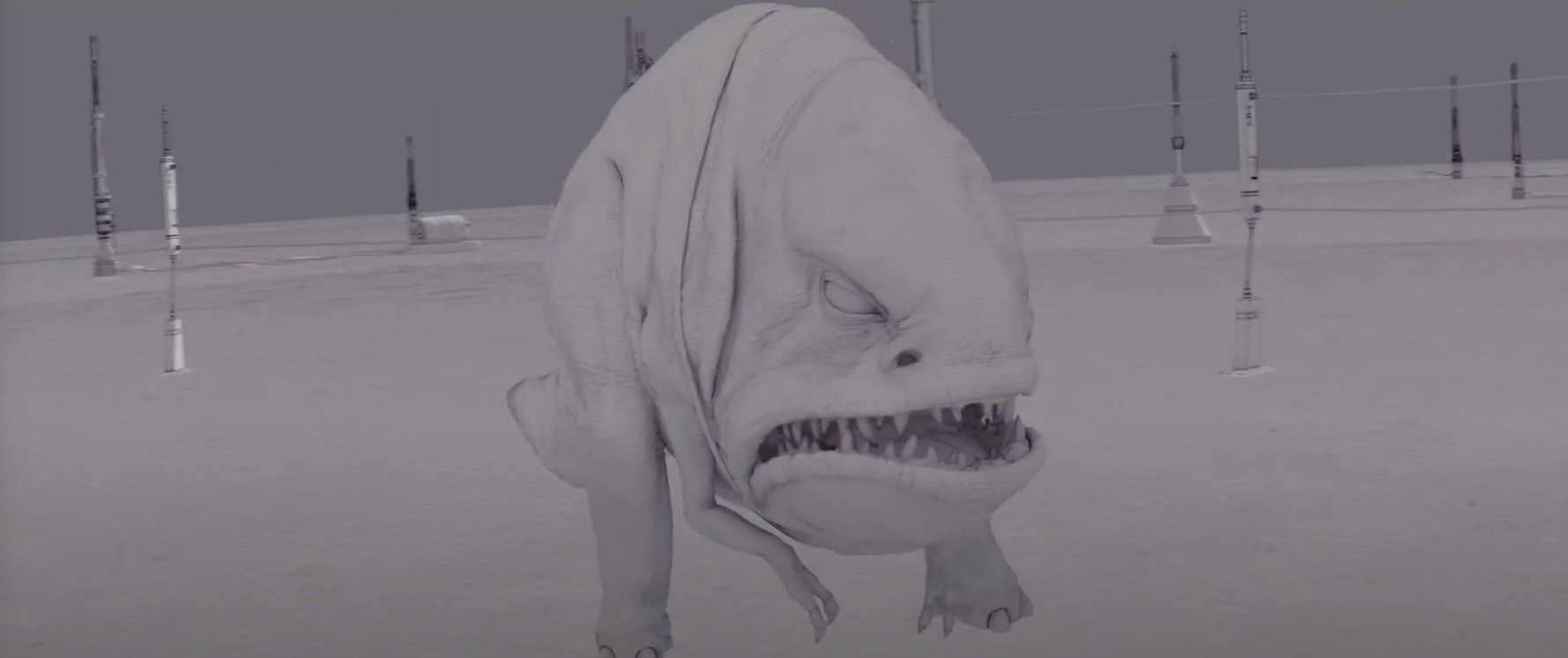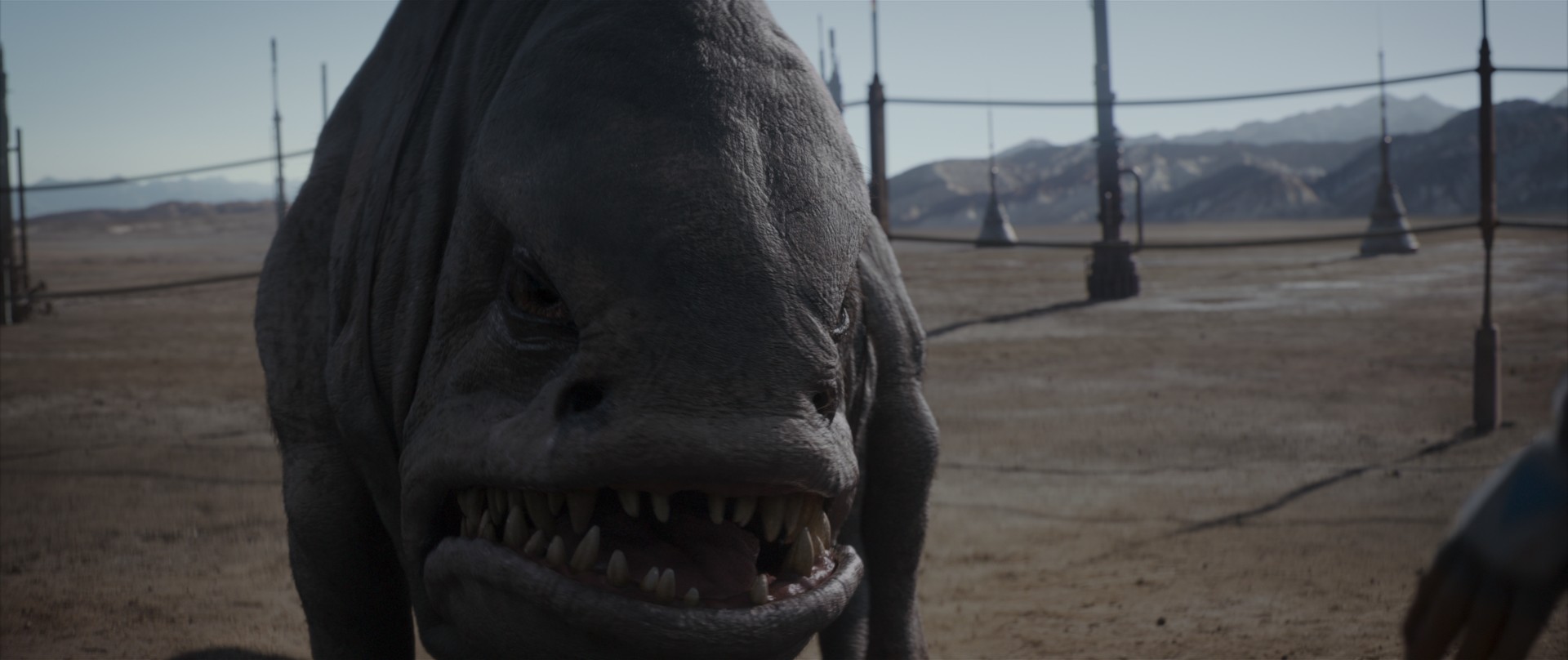Star Wars spinoff series The Mandalorian gave streaming service Disney+ one of television’s biggest hits in 2019 and introduced the world to the adorable alien known as Baby Yoda.
The show follows bounty hunter Din Djarin (played by Pedro Pascal), who experiences a change of heart during an otherwise routine mission and soon finds himself on the run with a strange, Force-wielding infant under his protection. The first season featured a wide array of spectacular moments — both visually and narratively — and earned The Mandalorian an impressive 15 Primetime Emmy Awards nominations.
With season 2 of The Mandalorian set to premiere October 30, Digital Trends spoke to Goran Backman, visual effects supervisor from studio Pixomondo, who worked with the series’ overall VFX supervisor, Richard Bluff, and studio Industrial Light & Magic (ILM) on the first season to bring the world of the sci-fi saga to life on the screen.

Digital Trends: What was your team’s focus during The Mandalorian?
Goran Backman: We came in early, which was great for us because it allows us to really get into our task with the VFX supervisor, in this case, Richard Bluff. Our first task was to create some of the creatures for the show, starting with the Blurrg, which was a big part of the show. So that was our initial focus. We did a total of five creatures — six if you include the pit droids.
Star Wars ships are such an iconic part of the franchise. Did you work with Din Djarin’s ship, the Razor Crest, at all in season 1?
The Razor Crest was given to us by ILM, so we just had to take the data from ILM and put it into our pipeline so that we can use it on our side. The designers and ILM did a really good job with the ship. It was very well-made in terms of the aesthetics, and technically very thorough. The attention to detail was really high.
The pit droids made a return in the show. We last saw them in Star Wars: Episode II – Attack of the Clones, so what was involved in bringing them from that film into this series?
Generally speaking, when we started working on any kind of creature or character or environment, it began with a discussion with [design supervisor] Doug Chiang and Richard Bluff. In the case of existing creatures, we pull up concept designs from the entire Star Wars universe — old and new – and discuss aspects that we should incorporate. For the droids, we didn’t stray far from the pit droids that we as viewers already know and mainly added some detail to bring them a little bit more in line with what they envisioned for them in this location.
In this case, the pit droids were meant to be in a hangar bay where things are a little rundown. So we did some texture work and painted them up to hold up at close distance. The main bulk of our work here was in the animation itself. Jon Favreau, Richard, and animation director Hal Hickel wanted to see that jittery nervousness from the pit droids — along with some of those comedy elements – to ensure we stayed true to the existing Star Wars universe.
That was something we kept coming back to: Make sure this fits into the Star Wars universe. And that’s something that I, as a longtime fan, really appreciate. I grew up with these things and absolutely love Star Wars.
You mentioned working a lot on the Blurrgs. Star Wars creatures are always so weird and fun to see, but are they fun to work on as a visual effect?
Honestly, creature work is something that we at Pixomondo absolutely love. It’s something that allows everybody — all the departments — to really sink their teeth into the task. It’s challenging. It’s fun. And it’s a joy to see it at the end on the screen.

So I have to ask about the show’s real star. Did you work with Baby Yoda at all? What was your proximity to Baby Yoda?
Oh, me and Baby Yoda, we’re very close. [Laughs]
Is there an element from the first season of The Mandalorian you’re particularly proud of working on?
Generally, our work on the creatures is what I was most proud of. How that work all came together — particularly with the Blurrg — was a long process. It was a workflow that started at an early stage. We started by getting the concepts from Richard and Doug, and that included a lot of old concepts, including some of Terryl Whitlatch‘s work. She did a lot of creature designs in the earlier Star Wars films — for the dewbacks in particular. We also talked about the Blurrgs in the old TV special, Ewoks: The Battle For Endor.
Wow! Most people don’t remember that movie exists. That was their first appearance, wasn’t it?
Yes. And when my much younger self found out there was a movie I had not seen yet, I was so excited.

I have fond memories of watching that movie on TV in the 1980s, but haven’t heard it mentioned in years! How did it play into the design process?
Jon Favreau grew up with that film, and he really wanted to see this creature in The Mandalorian. So we looked at all of that work and identified key features they wanted to see. It really had to hold up closely, because we have shots where The Mandalorian pets the Blurrg on his forehead and we have shots of the eyes in which they’re really large in the camera’s view. Favreau emphasized he wanted the Blurrg’s eyes to really feel like that of a living creature. We had to ensure that we see all those intricacies, down to the small hairs you see on elephants and rhinos and such. We even built out the irises correctly, with the small narrow indents as part of the geometry.
Rhinos and elephants were some of the references we used, because the more fantastical and otherworldly you go, the more it’s important to keep referencing some real-world aspects. We took great care in looking at photos and always considered how their bodies would actually function and how their weight would get applied — not just in animation, but also in the design of their bodies. Because the Blurrg only has two legs to walk on, we made sure when they stood in their normal, idle pose, the weight felt real. We had to make sure that the tail was large enough to balance out the front section of the Blurrg.

Once you had the design down, how did you merge that with the actors’ performances in The Mandalorian?
That’s where the process became very involved. Since we had a lot of interaction between the actors and the creatures, we also had to drive the on-set, practical buck — that’s what we called the saddle that the actors would ride, sort of like the seat on a mechanical bull. The saddle sat on top of a small section of a practical Blurrg, and this was then attached to a motion base, which has pistons driving it.
So you had to match up your animation with the actors’ performances on the buck?
It’s the other way around, interestingly enough, and that’s one of the reasons we started earlier on the show. We actually drove the pistons under the buck from our animation.
How did that work?
In our animation software, we would animate the Blurrg walking, running, or even shot-specific actions. Then we attached a 3D version of the motion base with the pistons to that animation. Those pistons would move with our animation, and each piston would have colors indicating whether you’re moving too fast or out of their actual range, and in this way, we could keep the animation limited to what is practically possible.
We would then send this animation back to ILM, and they would use it to drive the physical motion base. The pistons under the buck would now make the buck and our Blurrg animations match. When they finished filming the day’s practical shots, they would tell us which parts of our animation they ended up using in the scenes that were filmed, and we would then put that animation into the shots. This way, it would line up perfectly.
The Mandalorian is one of the recent shows using those massive LED screens to create realistic environments around the actors. What was your experience like working with those screens?
We’ve shot foreground actors against moving footage on background screens before, but with this new technology, the screen content is even more immersive, even more seamless. The real-time CG world seen on the background screen is now correctly parallaxing and lighting up the practical set and actors. Being exposed to this new way of filmmaking was mind-blowing and a real eye-opener.
Star Wars spinoff series The Mandalorian returns for its second season October 30 on the Disney+ streaming service.
Editors' Recommendations
- Disney+ reveals the first trailer for Star Wars: Tales of the Empire
- Star Wars could’ve had Christopher Walken as Han Solo and Jodie Foster as Princess Leia
- Did Andor ruin Ahsoka, and maybe the entire Star Wars franchise, by being too good?
- Disney shifts release dates for Marvel movies, Star Wars films, and Avatar sequels
- Darth Vader vs. Kylo Ren: which one is the better Star Wars villain?








